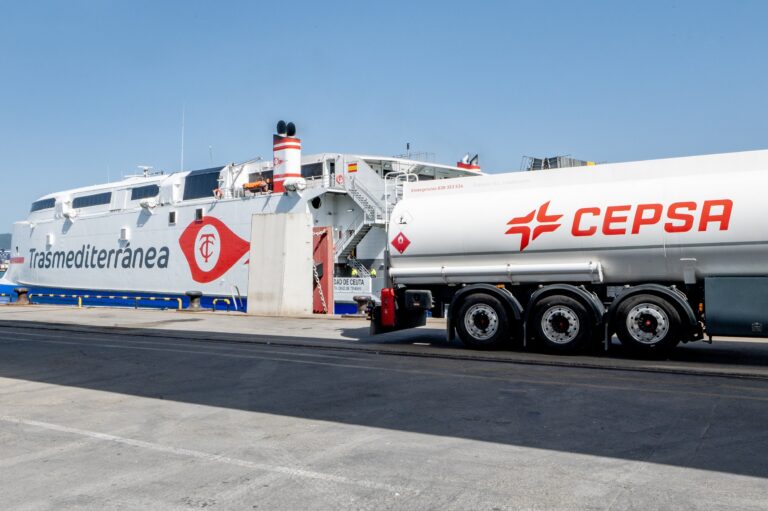Naviera Armas Trasmediterránea – a ferry company operating across the Strait of Gibraltar – is to utilize Cepsa’s second-generation, renewable diesel biofuel to power its passenger ships. The agreement marks the first time that the vessels will use this type of sustainable fuel, produced from agricultural waste at Cepsa’s San Roque Energy Park in Campo de Gibraltar, Cadiz.
The 2G biofuel will be supplied at the Port of Algeciras to Naviera Armas Trasmediterránea’s ferries that operate on a route between Algeciras and Ceuta. The second-generation fuel is said to reduce CO2 emissions by up to 90% compared with traditionally used fossil fuels, and can be used without making modifications to the existing engines.
Using 15% renewable diesel in the vessels’ tanks will prevent an estimated 63 tons of CO2 from entering the atmosphere. Cepsa has analyzed and tested the biofuel at its research center to ensure it meets the required engine operation and performance parameters.
In addition to the renewable diesel, Cepsa aims to supply green ammonia and methanol as clean maritime fuel in the future, thanks to new partnerships. By 2030, the company hopes to become the leading producer of biofuels in Spain and Portugal, with a production capacity of 2.5 million tons each year. Cepsa also plans to produce green hydrogen, with 2GW of electrolysis capacity.
“We continue to promote sustainable mobility as one of the pillars of our strategic growth,” said Samir Fernández, director of marine fuel solutions at Cepsa. “With initiatives like these and the ones we are rolling out in air and rail transport, we are progressing toward our goal of becoming the leading biofuels producer in Spain and Portugal while facilitating the decarbonization of our customers in the maritime sector.”
“We’ve had a natural understanding with Cepsa, which is why we entrusted them with the supply of 2G biofuels that we are already using in our ships in the Strait of Gibraltar and will extend to the rest of our fleet,” added Agustín Aguilera, director of operations and environment at Naviera Armas Trasmediterránea.
For more on power and propulsion, please click here.



